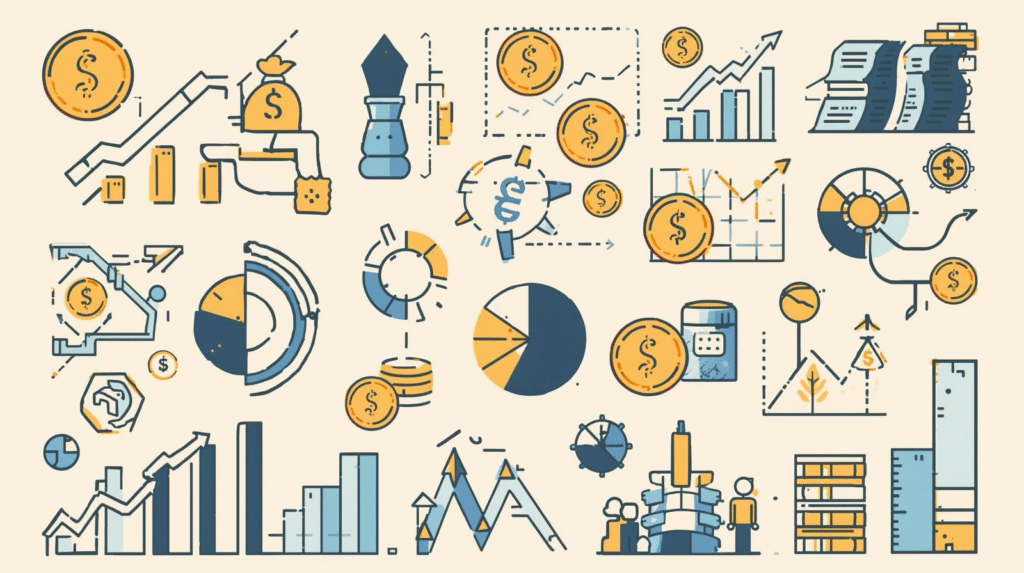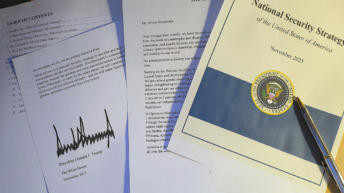
The era of US dollar world-dominance is over. India’s purchase of Russian energy in UAE Dirhams, and Chinese yuans is a significant factor in this pole shift; the same can be said about BHP-Billiton, the Australian mining company, doing business with China in yuans since mid-October 2025, and the M-Bridge between East Asia and the Gulf countries. After the weaponisation of the US dollar to punish dissenters, like Russia, Iran, and tomorrow perhaps India or China, the world is moving away from the US dollar and US-led system to settle trades. It is noticeable that this move originated in Russia as a major smart power operation. It was the starting point of the current de-Americanisation of the world, the most important event since WW2. Central banks now hold more gold than US Treasuries ( T-bonds) for the first time since 1995. Trump’s tariffs are a major cause of this state of affairs. The global feeling now is «the US can keep its dollars, China has the dysprosium » (Warwick Powell, May 2025, GGI). If the European Union opens its doors to ‘the Rest’, rebalance alliances, and rebuild Eurasian trade, it would create a major opportunity for growth; but who could lead Europe towards the realization of such an ambitious vision of Eurasian integration?
There is more to come from the Trump administration’s threat to erase the value of dollar’ designated assets detained by ‘hostile countries’; not only do central banks fear the seizure of their reserves if they don’t comply with US diktats; they also fear the cancellation of T-bonds. So, ‘no more T-bonds in your porfolios, keep as few US-based assets as possible’ is the new motto of fund managers all over Asia, the Middle East, and soon, Africa, and it is spreading to Europe too. The time for locally focused economics has come, and domestic demand is coming to be far more important than international trade and exports, not so many US Dollars are needed to trade internationally.
The new gas pipeline between Russia and China, the CPEC running from Central Asia to Gwadar, and the North-South Corridor from Northern Russia to the Indian-run Chabahar deep sea harbour in Iran are all intended to avoid the US strategic threat on the high seas. China’s new embargo on its rare earth exports, and the race for African strategic minerals, are responses to the weaponisation of finance and trade by the USA. Control of national territory and ways of communications by the other powers has gained critical importance as a result.
A misleading idea promoted by legions of consultants, accountants, and financial advisors was: ‘ if you have money, you will be able to buy anything from anywhere’. Now, China has reminded all of us that natural resources are not found everywhere. Millions of people are still fighting and killing to keep their lands. The new ‘belts and roads’ across Eurasia, the pursuit of connectivity in Central Asia, are determined by ecosystems and topography. Geography is showing its dominance over history. It still matters to hold your ground. This implies that the new world will be ‘Localistic’ because location and territory are critical. People want to stay on their native soil, they want to have their say on what happens close to them, and they wish to maintain a clean, safe, and peaceful environment.
Half of the growth of the US is in the sector of Artificial Intelligence R&D. AI credits are larger than bank credits in the US economy. ‘AI is now a debt bubble too, surpassing all banks to become the largest sector in the Market’ according to Tyler Durden, (09-10-2025), and the bet on AI dwarfs consumer spending in the country. There are many reasons for AI not to deliver on the wild expectations it generates, first of all because AI is very capital and energy-intensive, like shipbuilding or metallurgical industries were in the past; therefore, will it have similarly low and slow returns as Jamie Dimon, the head of Morgan Chase, fears ( October 9, 2025) ?
AI, data centers, and all the supply chain of the Internet, (as well as Boeing’s spare parts), are heavily reliant on minerals controlled by China, and this supply chain is now being disrupted. Generative AI has no chance of success, because it is based on false assumptions of how the human brain works. AI may remain stuck in the blind alley of ‘big data, small task’, and not achieve the ‘small data, big task’ performance which characterises the human mind, in the opinion of Song-Chun Zhu, from the Beijing Institute of General Artificial Intelligence (The Guardian, September 16, 2025). If AI does not deliver the very high returns on capital that are expected, the US will enter a deflationary process, very negative for equities and bonds. That may happen in the coming weeks.
If nothing changes, China stands to win the trade struggle with the US – and nobody seems to pay attention to Taiwan anymore. India will join the fight against America’s supremacist claims. The shift in Chinese economic policy dates back to the unprecedented restrictions on trade imposed by the US in 1999; then, in 2018, in keeping with the Defense Planning Guidance of 1992, the US suddenly suspended any sales of microchips to China. It was a wakeup call for the Chinese government which decided to push money and credit banking out of the real estate sector and into the industrial and high-tech sectors. In less than ten years, the Chinese industry became by far the most productive, efficient, and innovative in the world. Labor price is no longer the main competitive advantage for China; robotisation is, and effective AI will be. As a consequence, China’s ageing population is more of a social issue than an economic threat. The deflationary effect of this transformation is striking. Now, to help young urban dwellers to beget more children, the Chinese government is pumping money back into the stock market. Chinese equities are now in the situation of US equities in the 2010s; they face a decade of strong growth ( US equity markets have, from 2012 to 2025, added more value than the capitalisation of all equity markets in the EU and Japan combined, according to the analysis of Louis-Charles Gave, Gavekal Forum, Paris, 4-10-2025 ).
The export controls on rare earth minerals and other elements announced by MOFCOM in october of 2025 could enormously raise the profits on China’s trade – in fact, hitherto the US was the only nation applying some export controls on industrial hardware since WWII. The new situation has led the US and UK Intelligence Services to warn that only a war could stop the otherwise unstoppable Chinese rise.
There are major shifts in economic policies worldwide.
Until not so long ago, productivity was determined by wide-open competition between private companies. Now, the net economy and the AI economy are becoming monopolistic. Companies like Alphabet, Nvidia, ChatGPT, etc., have gained unchallenged pricing power; that will not endure. The fight between proprietary models and patent-based privatisation, led by the US, and people-oriented, Open-Source AI, driven by China, will reshape the world. If China wins, and its model replaces the patent-based, toll-booth economy, the implosion of the AI bubble will wipe out colossal amounts of capital in the US-centered markets.
In the past, the global free flows of goods, capital, and services were supposed to promise a better future ; now, sovereignty takes the lead, with food security, energy autonomy, safe and friendly procurement becoming priorities for all nations. It is the end of free trade as we knew it, and soon will be the end of open border policies and free flows of people and even of free flows of capital as well. The best bet is now to be made on localist companies; companies which behave as national companies wherever they are in the world – Indian in India, Chinese in China, Texans in Texas, etc. And their equity offers the safest investments..
In the old systems, you had to adopt loose fiscal and monetary policies, then you had consumer spending, and subsequently you achieved growth in equity prices. Now, loose fiscal and monetary policies directly place money in equity, thereby boosting consumer spending. This is the current scenario in China, which makes the Chinese equity the best bet in the world, together with gold, as a result of the debasement of Western currencies. The competitive advantages of China, with the cheapest capital and the cheapest energy in the world, are here to stay. The brand of ‘socialism with Chinese characteristics’ may incite many countries to adopt a ‘ socialism with local features’. Might that not be the ultimate form of conservative nationalism?
Many sectors will benefit from the public deficit policy of China ( 10 % budget deficit) and its very high level of savings. The most promising may be the market of ’Made in China’ luxury items. For young, educated, increasingly affluent and patriotic urban dwellers, no more LVMH, Hermes or Dolce and Gabbana in the near future – they prefer Chinese brands. The potential is huge, and many young designers are launching their own brands and promoting them in the domestic market. The shift of credit banking from real estate to private industry and services could spur the take-off of this innovative, high-value sector, but would also bring to an end to the unlimited profits of many luxury brands from Italy, France, and other countries.
A decisive issue related to economic growth and financial markets would be an improvement in relations between China and India. If the two most populated countries on earth could pool their capabilities and assets, the low cost of capital in China, the abundant professional labour force in India benefiting from unlimited energy resources in Russia and elsewhere in Asia, a period of extraordinary prosperity could be the result, (see ‘A new episode of Ricardian growth of epic proportions ’, Charles Gave, Gavekal Research, 5 october, 2025). It would spread all over East Asia and Central Asia, and even to Europe, through increasing connectivity, with far greater economic returns than the overrated windfalls expected from AI. Trump’s tariffs would prove to have been the greatest gift from the US to Eurasia.
However, politics always matter, and they usually take the upper hand over free trade, free markets, and other economic ideologies.
The main financial problems are tied to US foreign policy, shaped by domestic issues, like the urgent need of republican farmers to sell their soybeans to China or to anyone else. It is hard to expect the US’s peaceful retreat into the American continent, even though Peter Hegseth clearly asked the US army to get ready for a civil war on October 1st, 2025. It is not so easy for an Empire to become a Nation. The American State is no longer a provider of global order and security. Since the war against Serbia, the US has been chiefly an engineer of chaos and destruction. We only have to take a close look at States like Georgia, Moldova, as well as Nepal, Bangladesh, Indonesia, Venezuela, Colombia, Lebanon, Syria, Iraq, Afghanistan, Iran, and Pakistan. In these and other nations, the US has fomented colour revolutions; its NGOs have instigated ’coups’ against foreign governments, as in Ukraine or Georgia, or have achieved either regime change (RC) or at least person change (PC). Chaos is an ally for the US because dilapidated societies and broke states are no threats or competitors and require aid. Facing the fall of the US dollar, a potential European revival leading to the recovery of strategic autonomy, and the rise of cooperation between China and India, the US may seek to spread chaos abroad even more aggressively. No Nation, least of all the US, could peacefully bear a fall of 30 % of its purchasing power, and yet that is the situation the US government is facing now as more and more funds move out of US assets. This is a reason for going to war.
Let us remember Elon Musk’s statements: ‘ We can change any regime if they won’t give us the lithium we need’. The twin mottos of US-led liberalism are ‘No limits’, and ‘The world is ours’. War is coming because wars made America great, not culture or civilisation, as was the case for China, India or Europe, and the USA ruling elites think war will make their country great again. This is the reality we are facing now. It is not the road to peace. What we are seeing is the end of the financially-driven westernisation of the world that drove globalisation. Geopolitics must now guide asset allocation.





Add comment